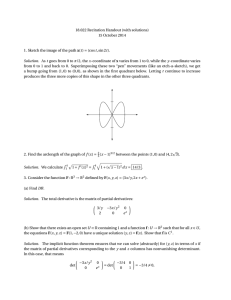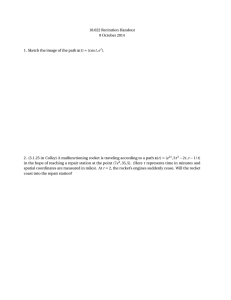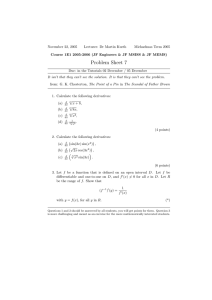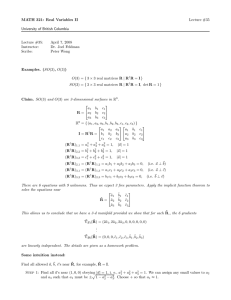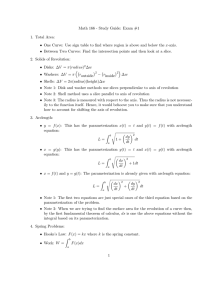18.022 Recitation Quiz (with solutions) 15 October 2014 √
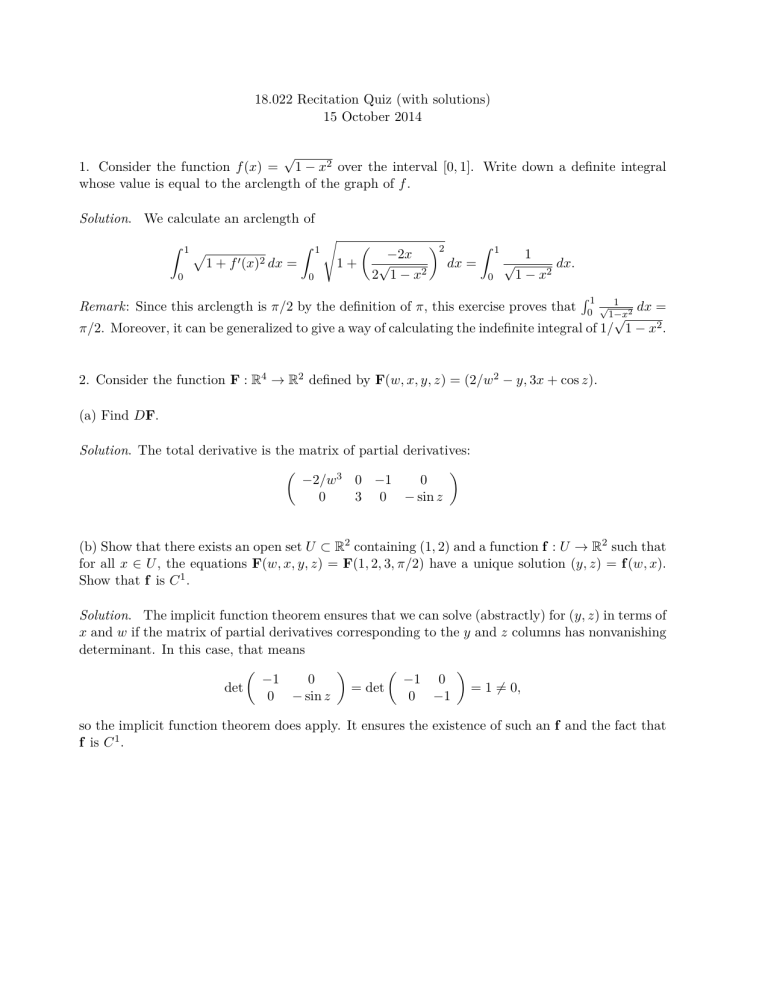
18.022 Recitation Quiz (with solutions)
15 October 2014
1. Consider the function f ( x ) =
√
1 − x 2 over the interval whose value is equal to the arclength of the graph of f .
[0 , 1] . Write down a definite integral
Solution .
We calculate an arclength of
Z
1 p
1 + f 0 ( x ) 2 dx =
0
Z
1 s
1 +
0
2
√
− 2 x
1 − x 2
2 dx =
Z
1
0
1
√
1 − x 2 dx.
Remark : Since this arclength is π/ 2 by the definition of π , this exercise proves that
R
0
1
√
1
π/ 2 . Moreover, it can be generalized to give a way of calculating the indefinite integral of 1 /
1
√ x 2 dx =
1 − x 2 .
2. Consider the function F :
R
4 →
R
2 defined by F ( w, x, y, z ) = (2 /w
2 − y, 3 x + cos z ) .
(a) Find D F .
Solution . The total derivative is the matrix of partial derivatives:
− 2 /w
3
0
0 − 1 0
3 0 − sin z
(b) Show that there exists an open set U ⊂
R
2 containing (1 , 2) and a function f : U →
R
2 such that for all x ∈ U , the equations F ( w, x, y, z ) = F (1 , 2 , 3 , π/ 2) have a unique solution ( y, z ) = f ( w, x ) .
Show that f is C
1
.
Solution . The implicit function theorem ensures that we can solve (abstractly) for ( y, z ) in terms of x and w if the matrix of partial derivatives corresponding to the y and z columns has nonvanishing determinant. In this case, that means det
− 1 0
0 − sin z
= det
− 1 0
0 − 1
= 1 = 0 , so the implicit function theorem does apply. It ensures the existence of such an f and the fact that f is C
1
.
